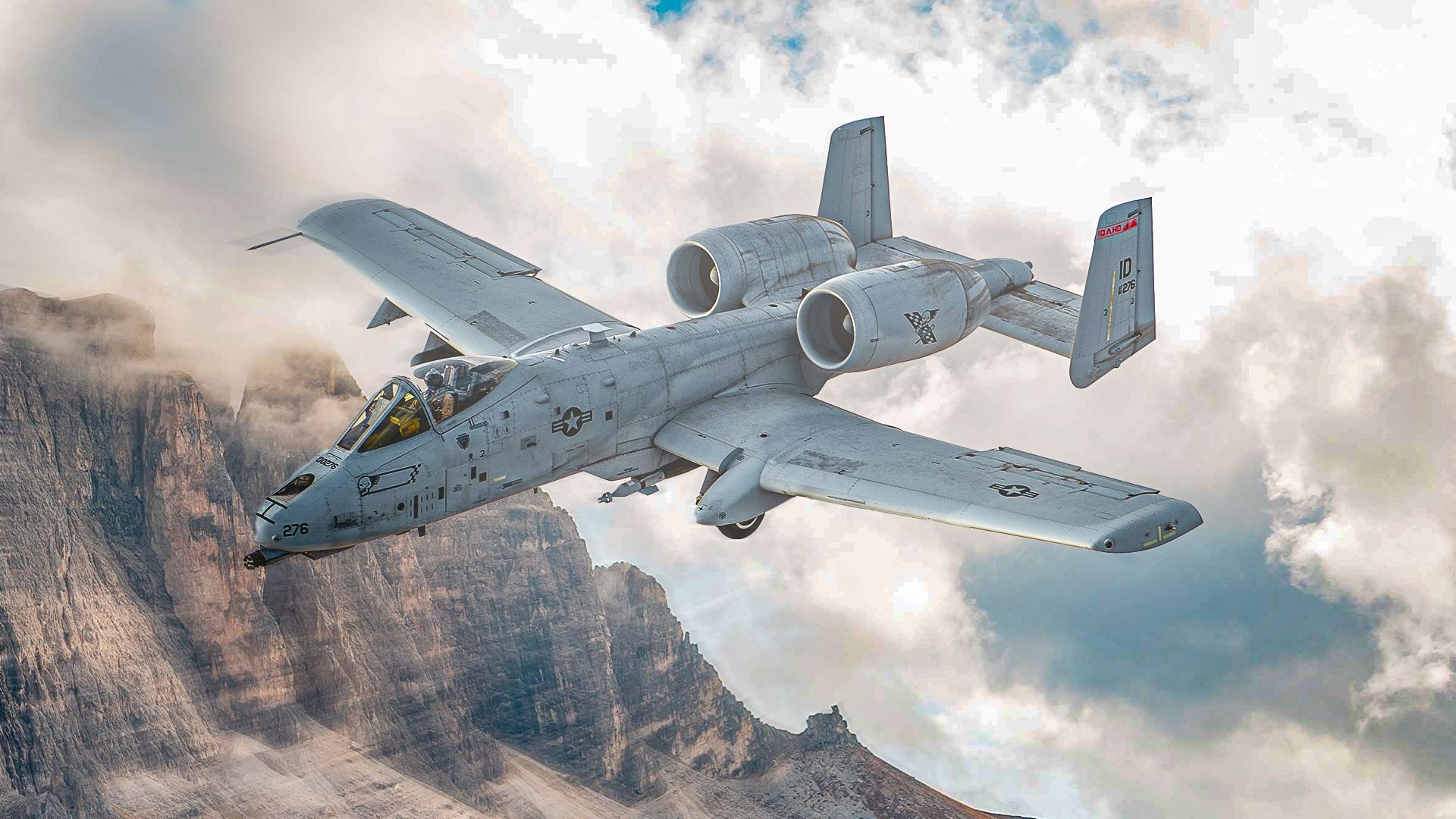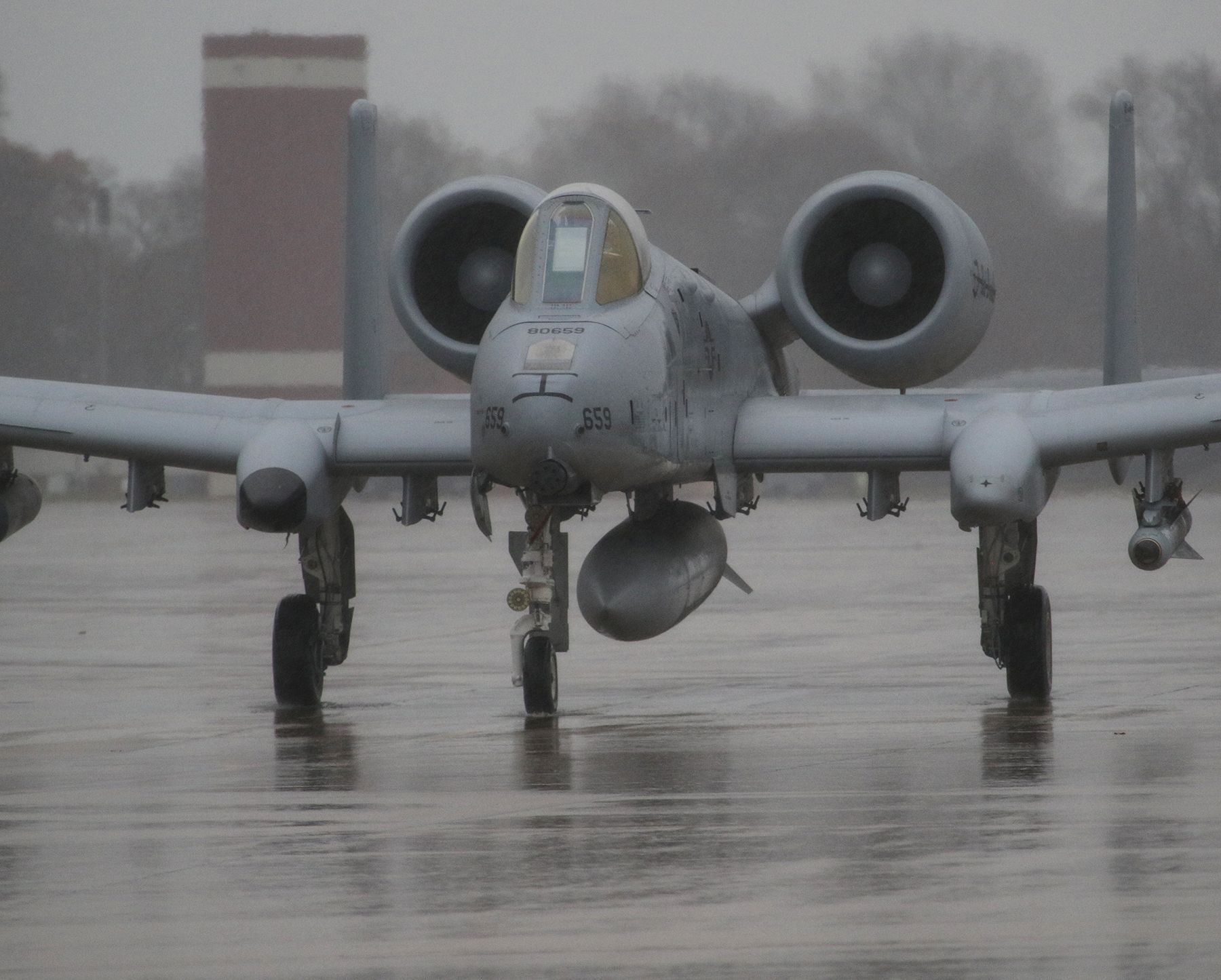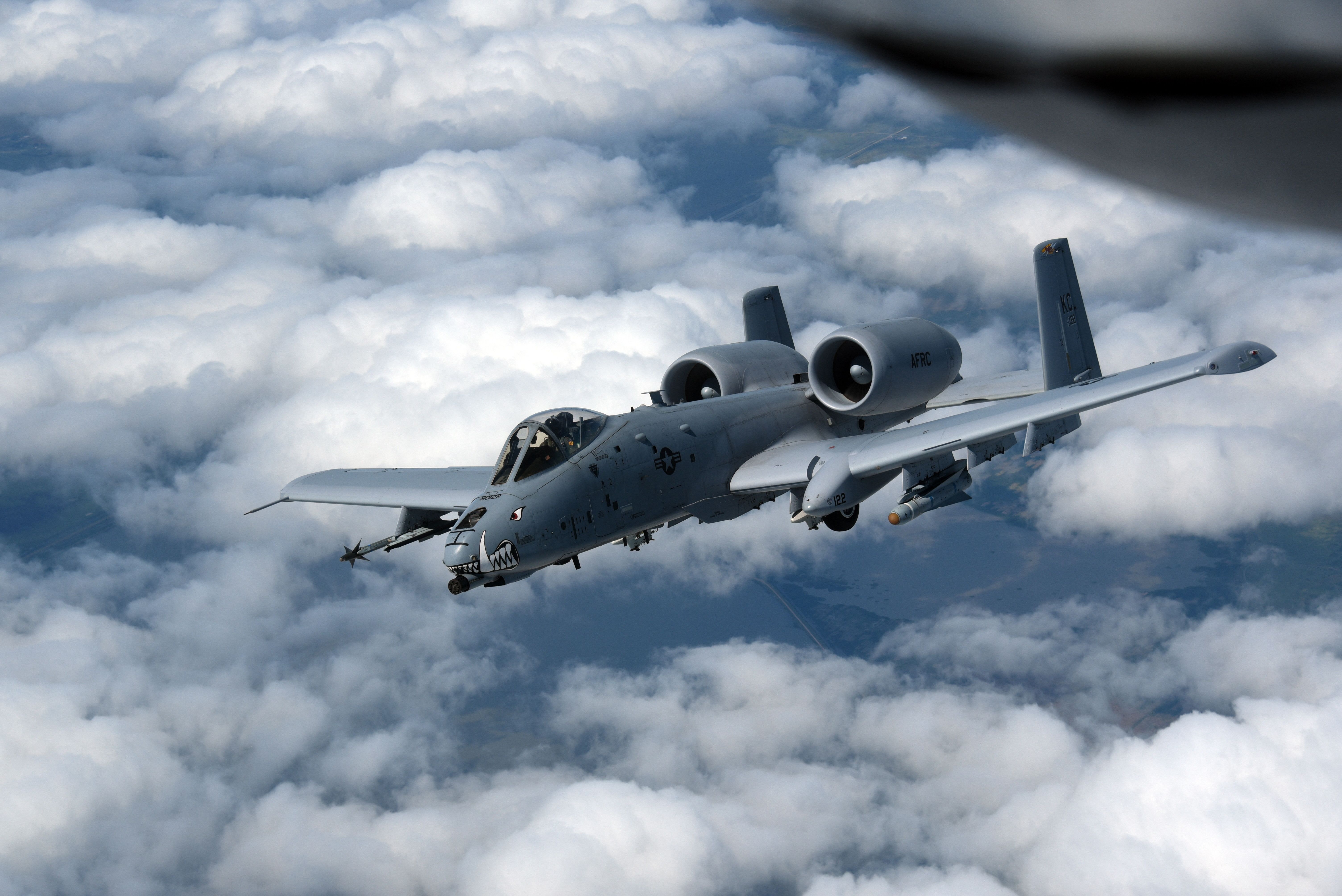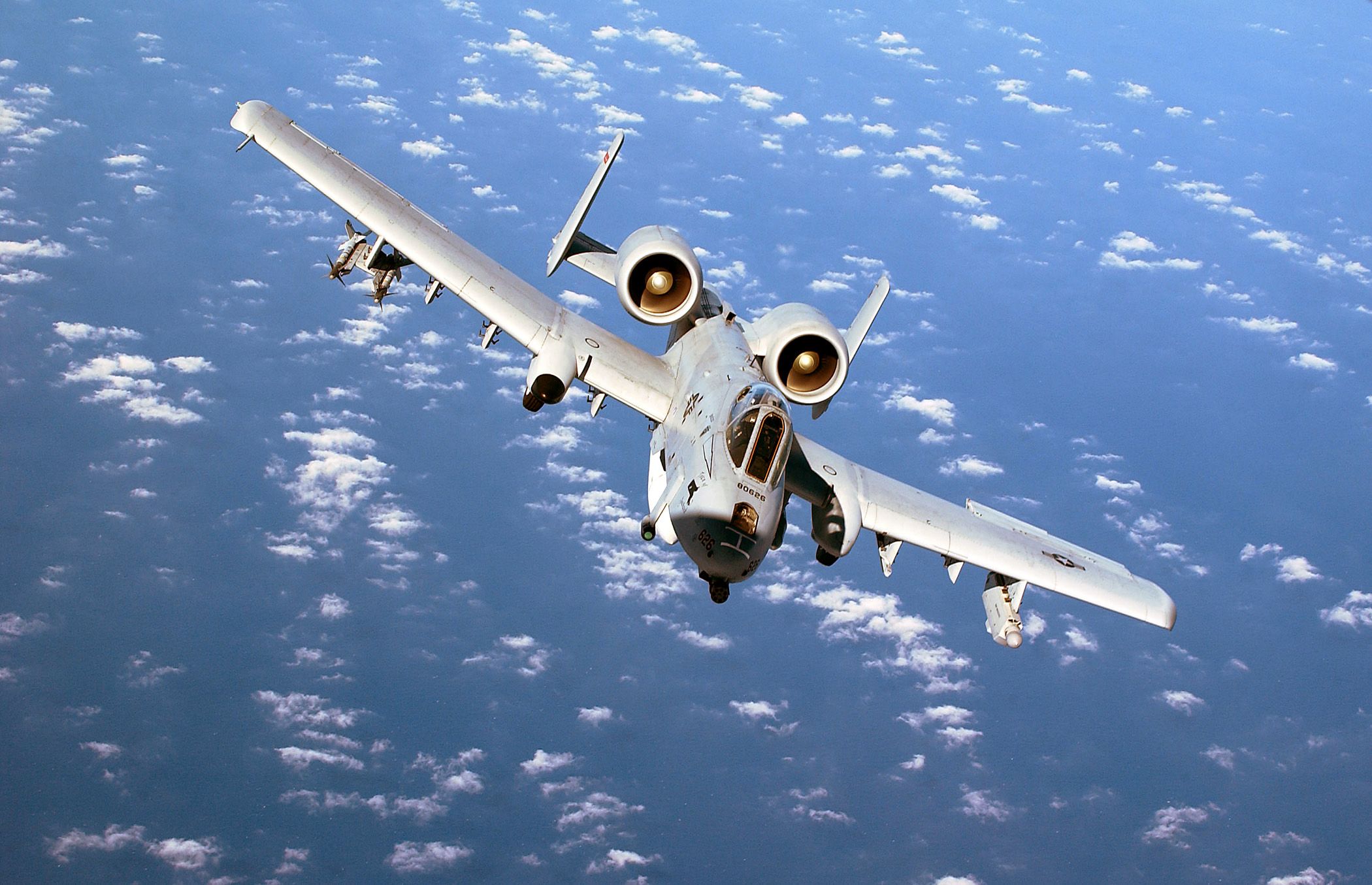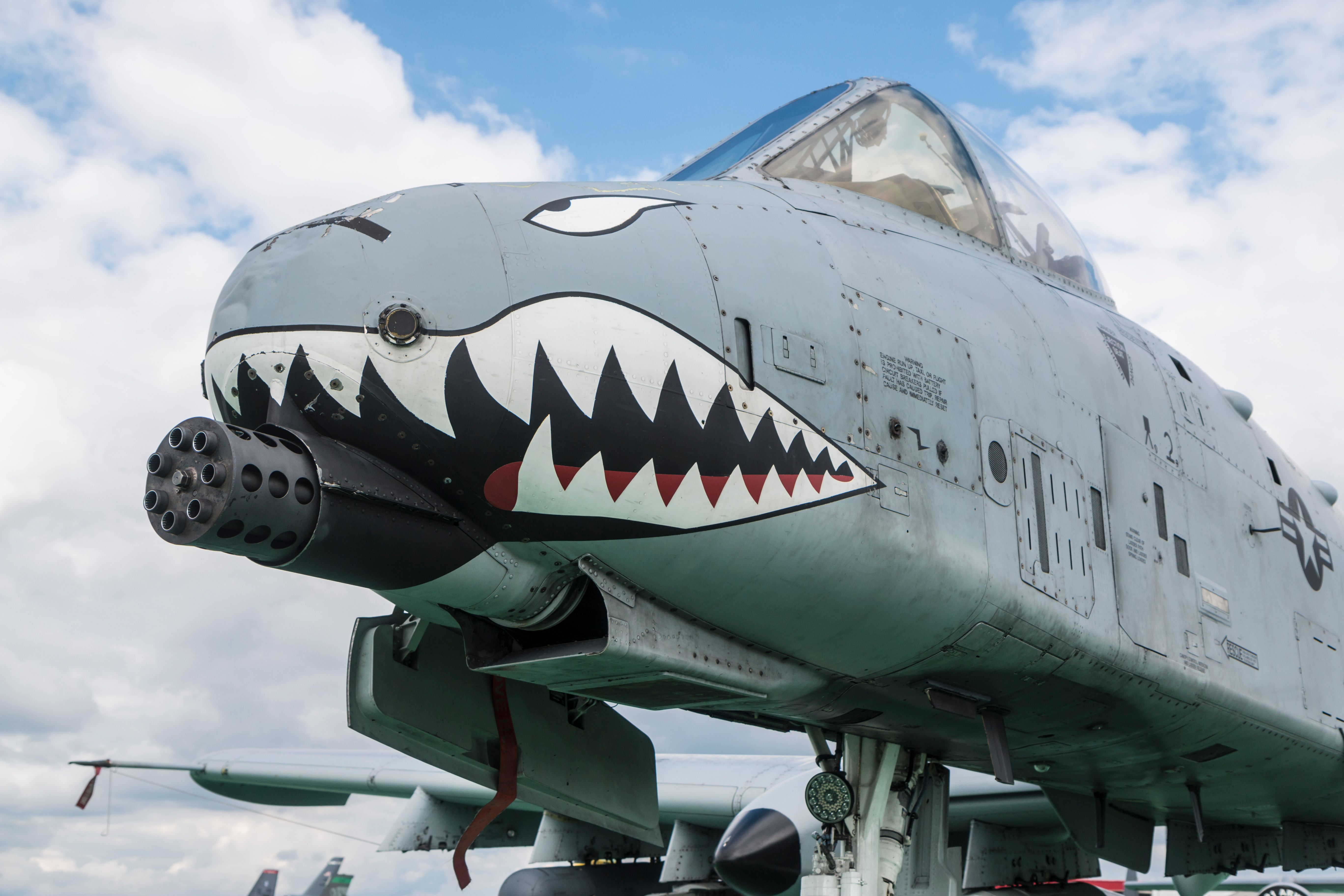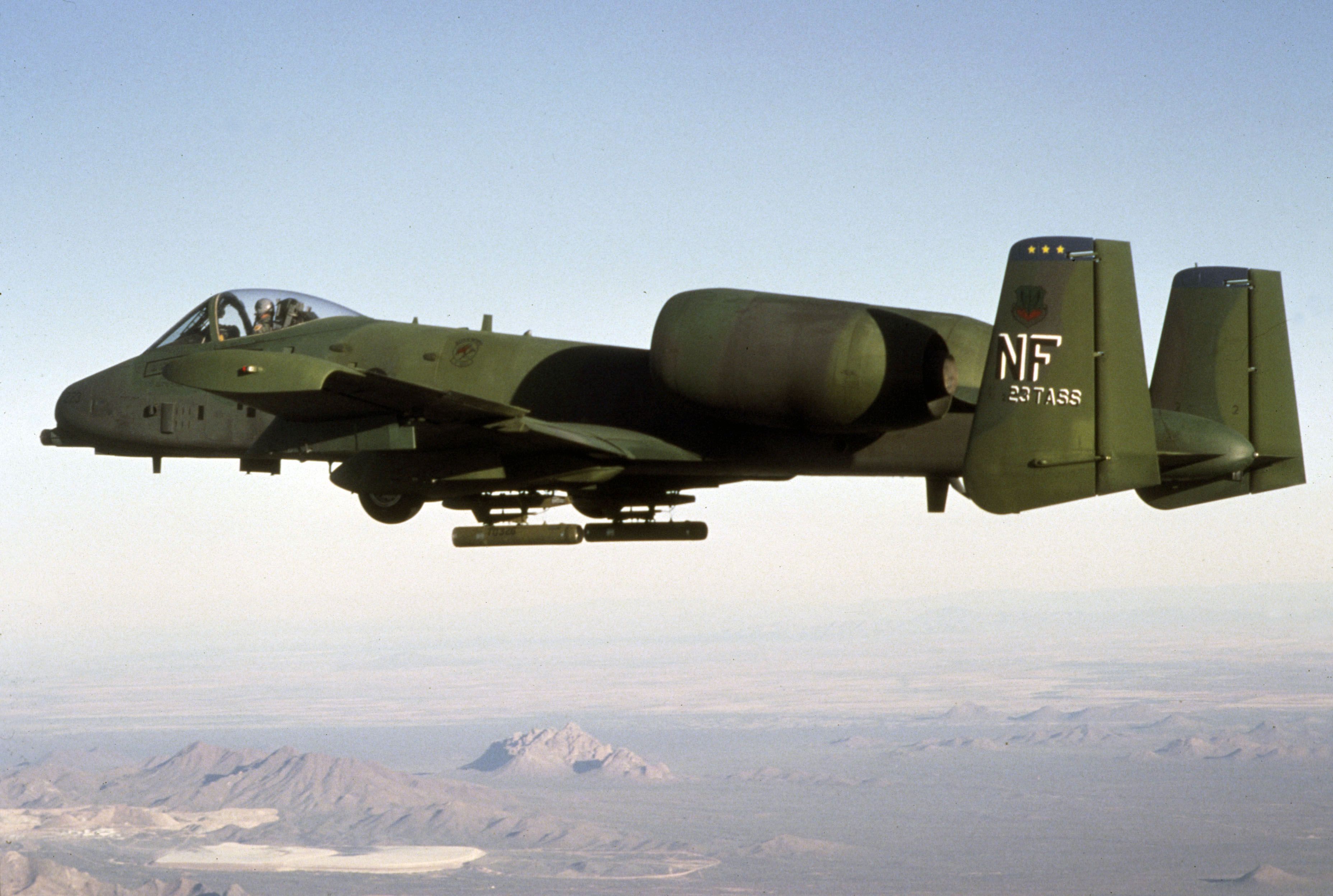Summary
- The A-10 Warthog was designed for Close Air Support missions, with a 30mm cannon and high survivability.
- It is combat-proven in Operations Desert Shield/Storm with 6 shoot-downs and only 7 total losses.
- The A-10 is expected to be operational until 2028.
The A-10 Warthog is one of the most feared and durable aircraft in the US Air Force inventory. Developed in the late 1960s specifically for Close Air Support missions (CAS), the A-10 is often referred to as an airplane built around a gun. The A-10 has supported ground forces during Operation Desert Shield/Storm, Operation Iraqi Freedom, the war in Afghanistan, and in Syria. In over 8,000 combat sorties, the A-10 has only suffered seven complete aircraft losses.
Photo: USAF
Early development
During the Vietnam War, US ground forces relied on the A-1E Skyraider for close air support missions. This propeller-driven aircraft from the Korean era proved to be inadequate for the mission, as it was underpowered for large payloads and too slow to evade small arms fire. The Army tried to bridge the gap by using armed UH-1 Iroquois and, eventually, the AH-1 Cobra helicopters. While these were improvements over the A-1, both were also vulnerable to small arms and ground fire. The US needed a better platform for CAS.
On September 8, 1966, General John McConnell, USAF Chief of Staff, ordered that an aircraft specifically for CAS be designed. In 1970, the specifications were amended to include that the aircraft should be built around a 30mm cannon to engage and defeat Soviet armor. The A-10 entered production in 1976, and over 700 aircraft were delivered to the US Air Force by 1984.
Photo: USAF
The A-10’s fuselage is designed around the GAU-8/A 30mm cannon. This primary weapon is used to defeat enemy armor and has a rate of fire of 3,900 rounds per minute. Additionally, the Warthog will carry a mix of Maverick AGM-65 air-to-ground missiles, cluster bombs, Joint Direct Attack Munitions (JDAM), a counter-measure pod (ALQ-131), and Sidewinder missiles for self-defense.
|
A-10 Armament |
|
|---|---|
|
Guns |
1× 30 mm (1.18 in) GAU-8/A Avenger rotary cannon with 1,174 rounds |
|
Rockets |
4× LAU-61/LAU-68 rocket pods (each with 19×/7× Hydra 70 mm/APKWS rockets, respectively) 6× LAU-131 rocket pods (each with 7× Hydra 70 rockets) |
|
Missiles |
2× AIM-9 Sidewinder air-to-air missiles for self-defense 6× AGM-65 Maverick air-to-ground missiles |
|
Bombs |
Mark 80 series of unguided ‘iron’ bombs or Mk 77 incendiary bombs or BLU-1, BLU-27/B, CBU-20 Rockeye II, BL755 and CBU-52/58/71/87/89/97 cluster bombs or Paveway series of Laser-guided bombs or Joint Direct Attack Munition (JDAM) (A-10C) or Wind Corrected Munitions Dispenser |
|
Other |
SUU-42A/A Flares/infrared decoys and chaff dispenser pod or 2× 600 US gal (2,300 L) Sargent Fletcher drop tanks for increased range/loiter time. |
The A-10 was designed for a high level of survivability, flying low-altitude CAS and Forward Observer missions. The pilot is seated in a titanium “bathtub” designed to withstand up to a 23mm projectile. Redundant hydraulics and mechanical systems allow the aircraft to continue flying if both hydraulics systems are damaged.
Photo: USAF
High-mounted GE turbofan engines reduce incidences of Foreign Object Debris (FOD) damage and allow the A-10 to operate from unimproved airfields while also reducing the infrared heat signature. A-10’s are built to withstand heavy damage and are designed to fly while missing one engine, half of the tail, and half of a wing.
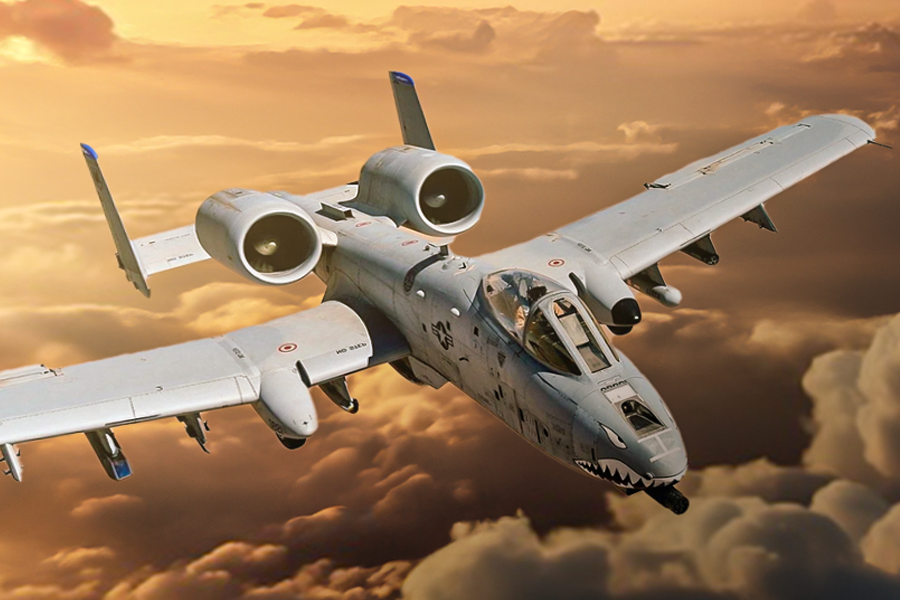
Related
How Many A-10 Warthogs Are Still In Service?
The jet is still a key part of the US Air Force’s ground strike operations.
Combat record
Warthogs first saw combat during Operation Desert Shield/Storm against Iraqi forces that had invaded Kuwait. A-10s destroyed hundreds of Iraqi armor pieces, provided CAS to coalition ground forces, and shot down two Iraqi helicopters. These victories, however, came at a price, as six of the seven recorded shoot-downs of A-10s occurred during this combat action. Four of these occurred over four days in February 1991.
- February 2, 1991 – Captain Richard Storr was shot down in an A-10 by an SA-16 surface-to-air missile. Captain Storr was captured and later released.
- February 15, 1991 – Lieutenant Robert Sweet was shot down in an A-10 by an SA-13 surface-to-air missile. Lieutenant Sweet was captured and later released.
- February 15, 1991 – Captain Steven Phyllis was shot down in an A-10 by an SA-13 surface-to-air missile. Captain Phyllis was killed in the crash.
- February 19, 1991 – Lieutenant Colonel Jeffery Fox was shot down in an A-10 by an SA-9 surface-to-air missile. LTC Fox ejected and was captured and later released.
- February 22, 1991 – Captain Rich Biley was hit by a surface-to-air missile and managed to fly his A-10 back to King Khalid Military City where he executed a successful wheels up crash landing. Captain Biley was unhurt during the landing, but the aircraft was deemed a total loss.
- February 27, 1991 – Lieutenant Patrick Olson was killed when attempting to land at King Khalid Military City after being hit by a surface-to-air missile during a reconnaissance mission over Kuwait. The aircraft had lost all its hydraulics and was attempting to land under manual control with one engine.
Photo: BlueBarronPhoto | Shutterstock
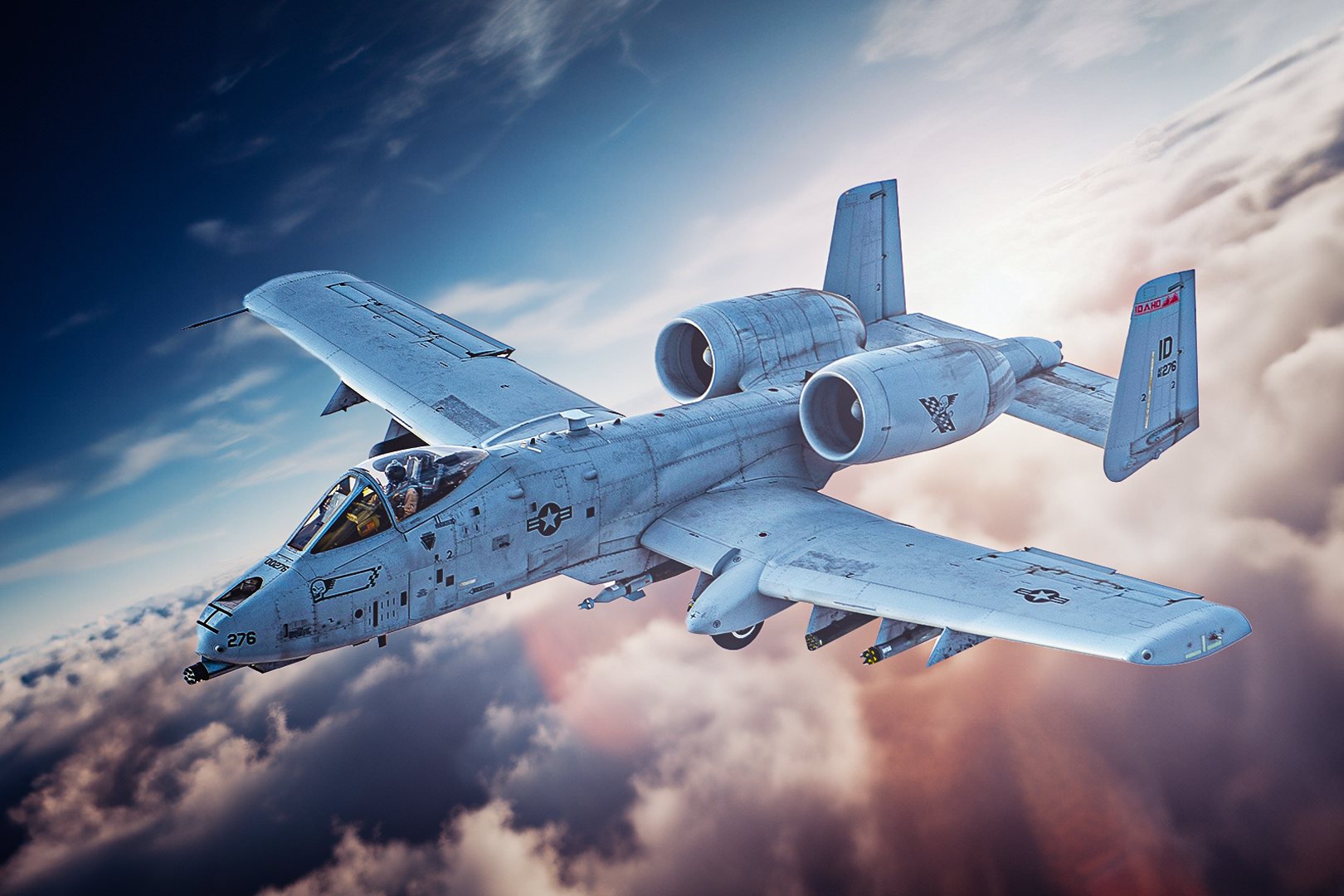
Related
Why Is The A-10 Warthog So Feared?
A lethal combination of unmatched firepower, durability, versatility, and combat record
The A-10 again saw combat during the Balkan conflict, flying multiple sorties against Serbian heavy weapons positions as well as CAS for Bosnian ground units and Combat Search and Rescue Operations (CSAR).
Most recently, the Warthog served in combat operations in both Afghanistan and Operation Iraqi Freedom. On April 8, 2003, an A-10 was shot down over Baghdad by an Iraqi Roland surface-to-air missile. The pilot survived. This was the last combat loss of an A-10 airframe. Additionally, Warthogs supported US and Allied forces in Libya and Syria.
Photo: USAF
The US Air Force projects the A-10 to remain operational until 2028, when it will be replaced by a combination of the F-35 Lightning and MQ-9 Reaper Unmanned Aerial System (UAS). This is contingent on the Air Force developing a suitable replacement for the A-10 in CAS missions. There is currently no aircraft in development to replace the A-10.

